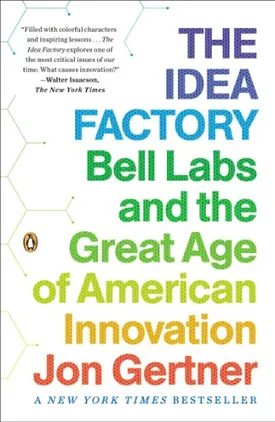The Idea Factory: Bell Labs and the Great Age of American Innovation by Jon Gertner
Jon Gertner’s book “The Idea Factory: Bell Labs and the Great Age of American Innovation” explores the history of Bell Laboratories, the world’s most successful research institution to date. Through extensive research and interviews, Gertner tells the story of how Bell Labs became the pinnacle of cutting edge innovation in the 20th century, producing some of the most important inventions of the last century, including the transistor, the laser, satellite communications, communications systems, the UNIX operating system, and more.
Bell Labs was founded in 1925 by the American Telephone and Telegraph Company (AT&T), and it was the world’s most advanced research and development laboratory. Led by legendary researchers like John Bardeen, Princeton physicist William Shockley, and Claude Shannon, Bell Labs pushed the boundaries of science and technology, making breakthroughs in communications and computing technologies that would change the world.
At its peak, Bell Labs employed over 10,000 people, including some of the greatest minds of the 20th century. The laboratories had a culture of innovation, where new ideas were sought out, discussed and tested. The laboratories were a place where collaboration was encouraged, and new discoveries were celebrated. Gertner writes that Bell Labs “was part university and part industrial incubator,” and it was a uniquely successful environment for new ideas.
Throughout Gertner’s book, he shines a light on the incredible inventions, like the transistor and the laser, and on the pioneering research done at Bell Labs. He tells the stories of inventors like John Bardeen, who revolutionized physics with his theories on electrons and helped invent the transistor; and William Shockley, who worked with Bardeen to develop the first silicon transistor. Gertner also looks at the origin of the laser, the invention of the UNIX operating system, and the development of satellite communications and communication systems, all of which revolutionized modern technology.
Gertner also looks at the wider context of Bell Labs’ innovations, and the impact they had on the world. We can see the long-term influence of these inventions on science, industry, and society as a whole. He discusses, for example, how the invention of the transistor lessened the need for vacuum tubes, allowing for a greater range of machines and appliances to be developed. Gertner also looks at the impact that UNIX and other inventions at Bell Labs had on the development of the internet and other computing technologies.
Gertner’s book is both an entertaining and informative read. He does an excellent job of introducing the reader to the history of Bell Labs, and of exploring the impact of its inventions on the modern world. He also paints a vivid picture of the culture of innovation and collaboration that allowed Bell Labs to achieve its success. “The Idea Factory” is essential reading for anyone interested in the history of science and technology and the impact of research and development on our lives.

